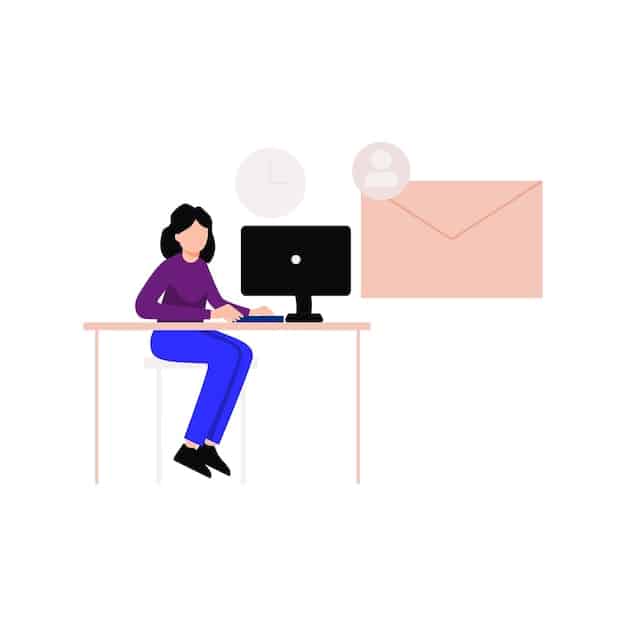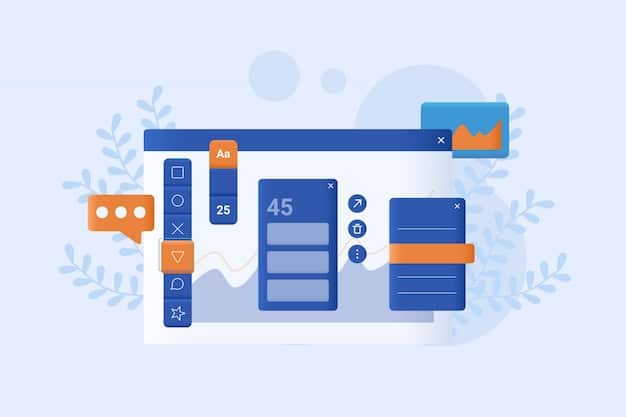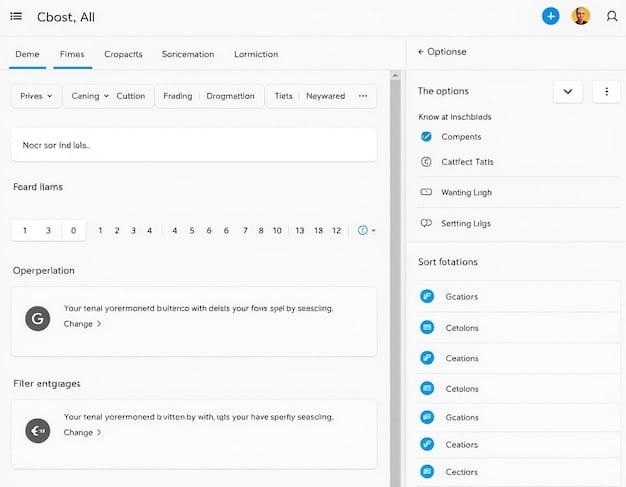Streamline Workflow: Integrate Email & Project Tracking Software

Streamline Your Workflow: A Step-by-Step Guide to Integrating Your Email Client with Your Project Tracking Software enhances productivity by automating tasks, centralizing communication, and improving organization, leading to better time management and project outcomes.
Do you find yourself constantly switching between your email and project tracking software? This can be a major drain on your productivity. This guide will show you how to streamline your workflow: a step-by-step guide to integrating your email client with your project tracking software, so you can get more done in less time.
Why Integrate Your Email and Project Tracking?
Integrating your email client with your project tracking software might seem like a small change, but it can have a significant impact on your overall efficiency. Let’s explore the key benefits of this integration.
Reduced Context Switching
Constantly jumping between different applications can break your focus and slow you down. Integration brings essential project information directly into your inbox.
Improved Communication
With integrated systems, important email conversations are automatically linked to relevant projects, ensuring everyone stays informed.
Enhanced Organization
Tired of email clutter? Integration can help you automatically file project-related emails, keeping your inbox clean and organized.
- Centralized Information: Access project updates and communications in one place.
- Automated Task Creation: Turn emails into tasks directly from your inbox.
- Streamlined Workflows: Reduce manual data entry and repetitive tasks.
By minimizing distractions and centralizing information, integrating your email and project tracking software can free up valuable time and mental energy, allowing you to focus on what truly matters.
Choosing the Right Integration Method
There are several ways to integrate your email client with your project tracking software. The best method depends on your specific tools and needs. Here are some common approaches.
Native Integrations
Many project tracking and email clients offer built-in integrations, making setup quick and easy. Check the documentation for your specific software to see if this is an option.
Third-Party Integrations
If your tools don’t have native integrations, third-party services like Zapier or IFTTT can bridge the gap, allowing you to automate workflows between different applications.
API Integrations
For more advanced users, API integrations offer the most customization and control. This approach requires some technical expertise but can provide a tailored solution.
Selecting the right integration method is crucial for achieving a seamless and efficient workflow. Consider the level of technical expertise required, the cost of the integration, and the specific features you need.

Step-by-Step Guide to Integrating with Zapier
Zapier is a popular and versatile platform that allows you to connect different apps and automate tasks between them. Here’s a step-by-step guide to integrating your email client and project tracking software using Zapier.
Create a Zapier Account
If you don’t already have one, sign up for a Zapier account. Zapier offers a free plan with limited features, as well as paid plans for more advanced use cases.
Connect Your Apps
Once you’re logged in, you’ll need to connect your email client (e.g., Gmail, Outlook) and your project tracking software (e.g., Asana, Trello, Jira) to Zapier. Follow the on-screen instructions to authorize Zapier to access your accounts.
Create a Zap
A “Zap” is an automated workflow that connects two or more apps. Click the “Create Zap” button to start building your integration. Select your email client as the trigger app (the app that starts the workflow) and your project tracking software as the action app (the app that performs the action).
- Choose a Trigger: Select a specific event in your email client that will trigger the workflow (e.g., a new email with a specific subject line).
- Set Up the Action: Define the action you want Zapier to perform in your project tracking software (e.g., create a new task, update an existing task).
- Test Your Zap: Before activating your Zap, test it to ensure it’s working correctly. Zapier will guide you through the testing process.
By following these steps, you can leverage Zapier’s powerful integration capabilities to create customized workflows that fit your unique needs and optimize your work process.
Setting Up Native Integrations: A Detailed Walkthrough
For users fortunate enough to have native integration options between their email client and project management tool, the setup process is often streamlined and user-friendly. Here’s a closer look at how to set up one example of a native integration.
Example: Integrating Gmail with Asana
Gmail and Asana offer tight integration, allowing you to create Asana tasks directly from your Gmail inbox.
Install the Asana for Gmail Add-on
Open your Gmail account and click the gear icon in the top-right corner. Select “See all settings” and then navigate to the “Add-ons” tab. Search for “Asana for Gmail” and install the add-on.
Authorize the Connection
Once installed, open an email and click the Asana icon in the right-hand sidebar. You’ll be prompted to log in to your Asana account and authorize the connection between Gmail and Asana.
Create Tasks From Emails
With the integration set up, you can now create Asana tasks directly from your Gmail inbox. Simply open an email, click the Asana icon, and fill in the task details. You can even assign the task to a specific project and set a due date.
Native integrations offer a convenient way to connect your email and project tracking software, eliminating the need for third-party tools and simplifying your workflow. Remember to explore the specific integration features offered by your chosen tools to maximize their benefits.

Customizing Your Integration for Maximum Impact
Once you’ve set up your email and project tracking integration, it’s time to customize it to fit your specific workflows and needs. Here are some tips for maximizing the impact of your integration.
Define Clear Triggers and Actions
Carefully consider which events in your email client should trigger actions in your project tracking software. Be specific about the conditions that must be met for the integration to run.
Map Data Fields Accurately
Ensure that data fields are correctly mapped between your email client and project tracking software. This will prevent errors and ensure that information is transferred accurately.
Test and Refine Your Integration Regularly
Integration is not a “set it and forget it” process. Regularly test your integration to ensure it’s working as expected. Refine your settings as needed to optimize your workflow.
- Use Filters: Filter emails based on sender, subject line, or keywords to trigger specific actions.
- Add Conditions: Set conditions that must be met before an action is performed.
- Customize Task Details: Tailor the task details created in your project tracking software to your specific needs.
By customizing your integration, you can create a highly efficient and personalized workflow that saves you time and improves your overall productivity.
Troubleshooting Common Integration Issues
Even with careful planning, you may encounter issues when integrating your email client and project tracking software. Here are some common problems and how to solve them.
Connection Errors
If you’re having trouble connecting your apps, double-check your login credentials and ensure that you’ve authorized the integration correctly. Review API documentation if applicable.
Data Mapping Problems
If data is not being transferred correctly, review your data mapping settings and ensure that fields are correctly aligned between your apps.
Workflow Failures
If your workflow is failing, check the logs for error messages and troubleshoot the issue accordingly. If you’re using a third-party integration platform, consult their documentation for help.
By understanding these common issues and their solutions, you can quickly resolve any problems that arise and ensure that your integration runs smoothly.
| Key Point | Brief Description |
|---|---|
| 📧 Context Switching | Reduces time wasted moving between email and project tools. |
| 🔗 Communication | Links key emails to projects, aiding collaboration. |
| ✅ Task Automation | Automates task creation from emails. |
| ⚙️ Customization | Tailor integrations for a personalized workflow. |
Frequently Asked Questions
▼
Integration reduces context switching, improves communication, enhances organization, and automates tasks, leading to increased productivity and better project management.
▼
Native integrations are simplest if available. Third-party tools like Zapier are versatile for connecting apps. API integrations offer the most customization but require technical expertise.
▼
Customize by defining clear triggers/actions, mapping data fields accurately, and regularly testing/refining. Use filters, add conditions, and tailor task details to fit specific workflows.
▼
Common issues include connection errors, data mapping problems, and workflow failures. These can usually be resolved by checking credentials, verifying data mapping settings, and reviewing error logs.
▼
Review your integration setup regularly, especially when you change your email client, project management tools, or workflow. This ensures the integration continues to function efficiently and effectively.
Conclusion
Integrating your email client with your project tracking software is a simple yet powerful way to boost productivity and streamline your workflow. By choosing the right integration method, customizing your setup, and troubleshooting common issues, you can create a seamless and efficient system that helps you get more done in less time.





